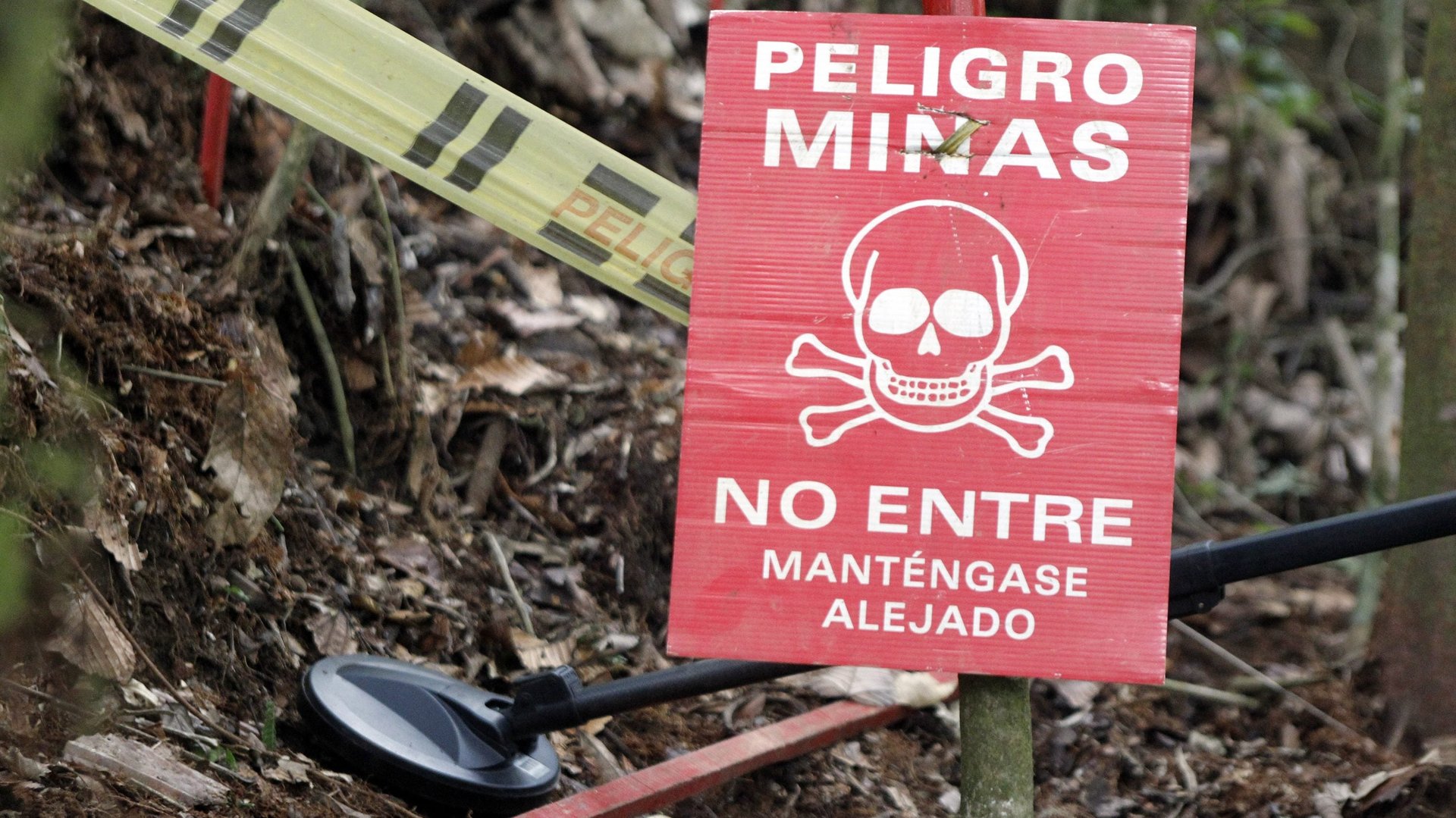Rebels and soldiers who don’t qualify for Colombia’s amnesty could pay their debt to society by clearing land mines
Colombia’s congress today passed an amnesty law for FARC rebels and Colombian soldiers who committed crimes during the country’s half-century-long civil war. It’s the first, and perhaps most crucial, of several laws entailed by the peace accord that the government and the FARC signed last month.


Colombia’s congress today passed an amnesty law for FARC rebels and Colombian soldiers who committed crimes during the country’s half-century-long civil war. It’s the first, and perhaps most crucial, of several laws entailed by the peace accord that the government and the FARC signed last month.
And since Colombia’s voters rejected an earlier version of the peace deal in a referendum—in part because some thought it was too soft on the rebels—the amnesty law will be a crucial step in cementing the peace process and giving former rebels a path back into civilian life.
But some will have a price to pay first.
The amnesty law (pdf, in Spanish) allows both FARC rebels and government troops to be pardoned for certain crimes, including killing in normal combat. But it doesn’t pardon war crimes, kidnapping, sexual violence, and torture.
A tribunal, the Special Jurisdiction for Peace (Spanish), will investigate those crimes. The sentences it hands out—which will depend in part on whether people admit and show contrition for their guilt—could include prison. But since the tribunal’s mission includes stabilizing the peace process and making reparations to victims, it will also impose alternative sentences (Spanish), such as construction or farm work in communities scarred by the fighting—or clearing land mines.
Colombia has more land mine victims than any other country except Afghanistan. Since 1990, mines have killed or injured more than 11,000 people, 39% of them civilians. More than 60% of the country’s 1,123 municipalities have reported having mines or other munitions lying around.
During their peace talks last year, the government and FARC agreed to work jointly on de-mining (Spanish). Since then a pilot project has managed to clear mines from five of the affected municipalities; the ambitious and probably unrealistic (pdf, p. 35) goal is for Colombia to be mine-free by March 1, 2021.
Nonetheless, de-mining is a crucial part of the peace process, putting former enemies to work together on healing the country’s divides. Colombian newspaper El Tiempo, reporting on the pilot project, described (Spanish) how an ex-FARC guerrilla and a soldier collaborated on clearing an area:
…two men walked together, talking constantly, as if they were team-mates, supporting one another at every dangerous step. Where the grass was high, they had to raise their hands to point out the mined areas. The one who did that and walked in front was the same man who had strategically placed the mines to set ablaze or to kill the one who, until two weeks earlier, had been his enemy.
“This is one of the areas,” said the guerrilla to the sergeant.
“Good. Let’s cordon it off,” the latter responded.
The sergeant explained to the guerrilla the steps required to mark out the zone, and in turn, the bomb-maker showed him why he had sown [the mine] there and the method he’d used to make and install it. It was an exchange of information that, in another era, both sides would have guarded as the most sacred of their military secrets.
They sat down together with a map of the pathway, and used a pencil to mark where the killing fields were and how to recognize them. They identified three areas and, together, they went there, cordoned them off, and put up the red signs with a skull and crossbones painted in the middle: “Danger. Mines. Do not enter. Stay away.”
Various de-mining organizations are already doing this kind of work, but they have been allowed to work only with FARC fighters who have been officially demobilized, not those who are still notionally active and considered criminals. While there are thousands of demobbed rebels, it’s the active FARC members who know best where the mines are.
The amnesty law and the special tribunal should make a lot of them available to the de-mining groups, as well as letting those groups reach previously rebel-held areas. That will be a big step in repairing the deep damage wrought by the civil war.